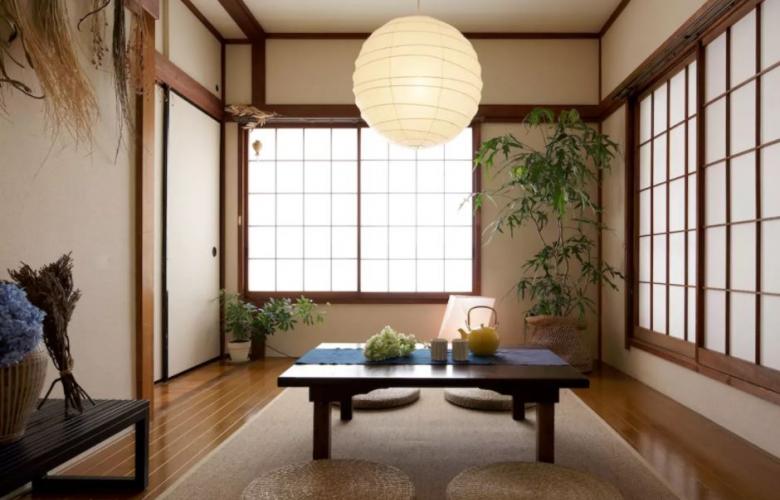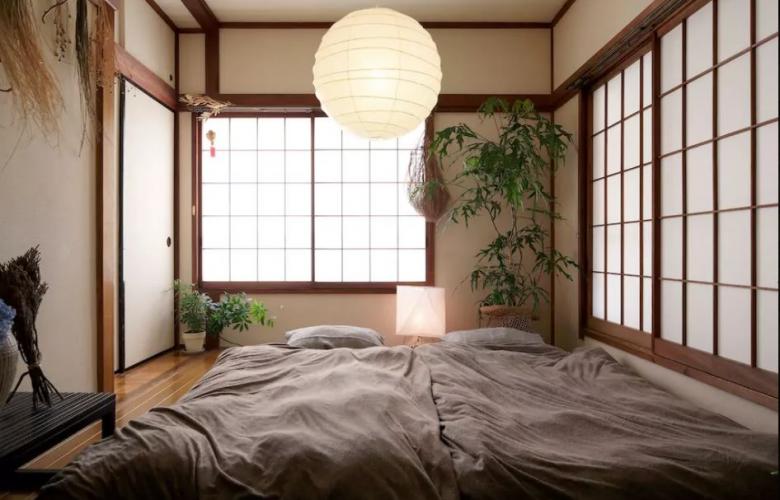These days, you can purchase a detached house with gardens and privacy, but also apartments of all shapes and sizes—which is becoming more common in Tokyo especially. If you're looking for a home in the city, you'll more than likely find yourself in an apartment in a multi-unit block, which can be divided into two categories: Apaato or Mansion. The former is a usually a smaller building with open entry and external doors to each house, while the latter are larger buildings with elevators, internal hallways and secured entrance points.
The sizes can vary, from small one-room spaces to 'family' apartments with multiple rooms and separate kitchens. Regardless of space, however, many traditional features are incorporated and there are modern elements you would now struggle to find even the smallest apartment without. When compared to homes around the world, some features seem unusual, but are vital parts of the Japanese home, regardless of the seemingly extravagant nature of their inclusion.
Stepping through the door will introduce your first sign that you have been welcomed into a Japanese home: the genkan. A lowered space between the door and home, the genkan is not quite inside, not quite outside, and is where you remove your shoes. You may have shoe racks and shelves, with neatly lined up slippers on the step of the hallway, so you can leave the dirt of the outdoor world where it belongs. It's worth noting that this no man's land is often considered open territory and postmen or visitors sometimes pop their head around the door to check if anyone's in, although these days this is only usually in the countryside—but worth locking your door either way.
Similarly, you will struggle to find a Japanese home without a balcony: vital for airing futons and having outdoor space, they often hold washing machines and usually attached to living spaces with sliding glass doors.
Once inside, one aspect of the Japanese home that truly separates it from its Western counterpart is the lack of a designated use for the main rooms. While the bathroom and kitchen are fixed, the living spaces are fluid, with bedrooms, living rooms, studies and guest rooms all interchangeable. This is due the tradition of minimal furniture and the use of large storage cupboards called oshiire—where everything from fans to futons can be stored during the day to open up spaces for more general use. The rooms themselves have either wooden or tatami flooring, with many modern houses having a traditional Japanese room called a washitsu. This room is distinguished by tatami flooring, an alcove called a tokonoma which often features a scroll or ikebana display, sliding panels with translucent paper called shoji and often a low table called a chabudai for family meals.
The Japanese bathroom is often divided up into at least two, but often three separate areas—even in the smallest of apartments. This is due to the tradition of cleaning completely before soaking in the deep bath: meaning a wet room area that usually incorporates a bath and shower, with the toilet in a separate room. There is usually a separate washroom too with a sink and toiletries cupboard and this is sometimes in the same room as the washing machine. Despite taking up a substantial amount of space in small apartments, this bathroom layout is quintessentially Japanese and is rarely ever westernized.
Often the heart of the home in many cultures, the kitchen in Japan can often seem like more of an afterthought. With little counter space, simple gas cooking stoves and no sign of an oven, it might not be quite what you're used to. Although many new builds are taking on a more modern kitchen style with larger spaces, counter seats and built-in appliances, most homes have stayed with the simple version. Often galley kitchens, many small apartments are limited to a single hob, small sink and one counter square, if they're lucky. While gadgets like rice cookers and the handy fish grill mean you can adapt and learn, the Japanese kitchen certainly takes some getting used to.
Something you may not notice in spring and summer but will become painfully apparent in winter is that Japanese homes still have little to no insulation and rarely have any form of actual heating system installed (unless in Northern Japan). This means very thin walls, single-pane windows and winters that last forever. Some of the more modern inventions can help, with many air-conditioning units having a heat setting, the much-loved kotatsu which is a heated table complete with duvet and heaters. While modern electric heaters are common, most houses still use kerosene heaters, with musical trucks often delivering in neighbourhoods during the colder months.
Overall, the Japanese home is a more flexible, open space, with a combination of modern and traditional aspects working together to create a quintessentially Japanese space, welcoming and practical in equal measure.
By Lily Crossley-Baxter
This article was previously published on REthink Tokyo
Ream more articles similar to this on REthink Tokyo:
Weird and wonderful: Japan's unconventional houses
Why Japanese buildings are so cold in winter
Japanese traditions for sustainable building










